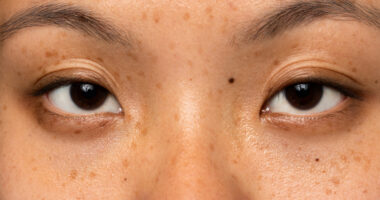Skin cancer is a widespread disease that affects millions of people all over the world. However, it is often not fully understood. In this article, we will discuss the complexities of skin cancer, including its different types, risk factors, preventive measures, and the importance of early detection for effective treatment and management.

Types of skin cancer
There are three main types of skin cancer, namely Basal Cell Carcinoma (BCC), Squamous Cell Carcinoma (SCC), and Melanoma.
1. Basal Cell Carcinoma (BCC): This is the most common type of skin cancer and usually appears on sun-exposed areas such as the face, neck, and hands. BCCs usually appear pearly or waxy bumps and may be pink, red, or translucent.
2. Squamous Cell Carcinoma (SCC): SCCs grow in areas exposed to the sun but can also occur in scars, burns, or chronic wounds. They may appear as red, scaly spots, open sores, or raised growths with a central depression.
3. Melanoma: Melanoma is less common but more aggressive than other types of skin cancer. It can develop anywhere on the body, including areas not exposed to the sun. Melanomas usually have irregular borders, asymmetrical shapes, and varying colors and can grow or change over time.

Skin Cancer Risk Factors
Several factors contribute to the development of skin cancer. These include excessive sun exposure, light skin, a family history of skin cancer, previous episodes of sunburn or radiation exposure, and abnormal moles or precancerous skin lesions (actinic keratosis).
- Excessive sun exposure: Prolonged exposure to ultraviolet (UV) rays from the sun or tanning beds increases the risk of skin cancer.
- Light skin: People with light skin, light hair, and blue or green eyes are more susceptible to skin damage from ultraviolet rays.
- Family history: A family history of skin cancer, especially melanoma, can increase an individual’s risk.
- Personal history: Previous episodes of sunburn, radiation exposure, or immunosuppressive disorders may increase risk.
- Moles or precancerous lesions: Abnormal moles or precancerous skin lesions (actinic keratosis) can develop into skin cancer if left untreated.

Preventive measures
Protecting your skin from UV rays is essential to preventing skin cancer:
1. Sun protection: Wear high-SPF sunscreen, protective clothing, hats, and sunglasses when outdoors.
2. Seek shade: Limit exposure during peak sunlight hours (10 a.m. to 4 p.m.) and seek shade whenever possible.
3. Avoid tanning beds: Ultraviolet radiation from tanning beds can be as harmful as sunlight.
4. Regular skin checks: Perform self-exams and seek professional skin checks to detect any changes or suspicious growths.

Early detection and treatment
Early detection significantly improves the prognosis and treatment outcomes of skin cancer. Be vigilant in monitoring your skin for any changes, including new moles, changes in size, shape, color, or texture of existing moles, and any unusual growths or sores that do not heal. See a dermatologist immediately if you notice any concerning signs or symptoms.

Conclusion: Improve skin health
Skin cancer is a preventable and treatable disease when detected early. By understanding your risk factors, protecting yourself from the sun, and prioritizing regular skin checks, you can protect your skin health and reduce your risk of skin cancer. Stay informed, stay vigilant, and take proactive steps to protect yourself and your loved ones from the consequences of skin cancer. What is Skin cancer: risks, prevention and early detection
Skin cancer is a common but often misunderstood disease that affects millions of people worldwide. In this blog post, we will delve into the complexities of skin cancer, including its types, risk factors, preventive measures, and the importance of early detection for effective treatment and management.

Types of skin cancer
Skin cancer can be classified into three main types:
1. Basal Cell Carcinoma (BCC): This is the most common type of skin cancer and usually appears on sun-exposed areas such as the face, neck, and hands. BCCs usually appear pearly or waxy bumps and may be pink, red, or translucent.
2. Squamous Cell Carcinoma (SCC): SCCs grow in areas exposed to the Sun but can also occur in scars, burns, or chronic wounds. They may appear as red, scaly spots, open sores, or raised growths with a central depression.
3. Melanoma: Melanoma is less common but more aggressive than other types of skin cancer. It can develop anywhere on the body, including areas not exposed to the sun. Melanomas usually have irregular borders, asymmetrical shapes and varying colours and can grow or change over time.

Skin Cancer Risk Factors
Several factors contribute to the development of skin cancer:
1. Excessive sun exposure: Prolonged exposure to ultraviolet (UV) rays from the sun or tanning beds increases the risk of skin cancer.
2. Light skin: People with light skin, light hair, and blue or green eyes are more susceptible to skin damage from ultraviolet rays.
3. Family history: A family history of skin cancer, especially melanoma, can increase an individual’s risk.
4. Personal history: Previous episodes of sunburn, radiation exposure, or immunosuppressive disorders may increase risk.
5. Moles or precancerous lesions: Abnormal moles or precancerous skin lesions (actinic keratosis) can develop into skin cancer if left untreated.

Preventive measures
Protecting your skin from UV rays is essential to preventing skin cancer:
* Sun protection: Wear high-SPF sunscreen, protective clothing, hats, and sunglasses when outdoors.
* Seek shade: Limit exposure during peak sunlight hours (10 a.m. to 4 p.m.) and seek shade whenever possible.
* Avoid tanning beds: Ultraviolet radiation from tanning beds can be as harmful as sunlight.
* Regular skin checks: Perform self-exams and seek professional skin checks to detect any changes or suspicious growths.

Early detection and treatment
Early detection can significantly improve the prognosis and treatment outcomes of skin cancer. You can monitor your skin for changes by performing self-exams and seeking professional skin checks. Look out for new moles, changes in size, shape, color, or texture of existing moles, and any unusual growths or sores that do not heal. If you notice any concerning signs or symptoms, see a dermatologist immediately.
In conclusion, skin cancer is preventable and treatable when detected early. By understanding your risk factors, protecting yourself from the sun, and prioritizing regular skin checks, you can protect your skin health and reduce your risk of skin cancer. Stay informed, stay vigilant, and take proactive steps to protect yourself and your loved ones from the consequences of skin cancer.









